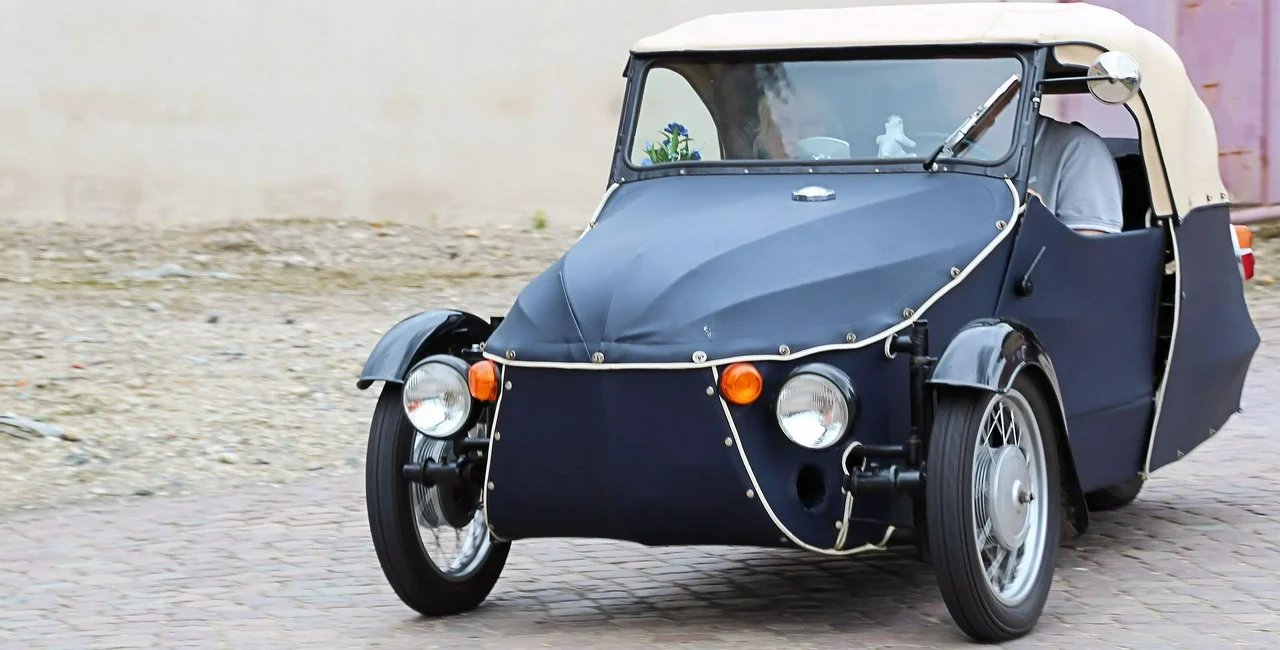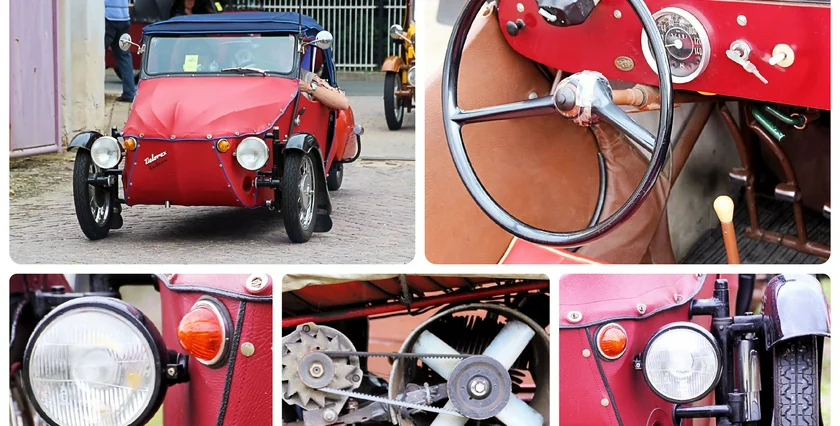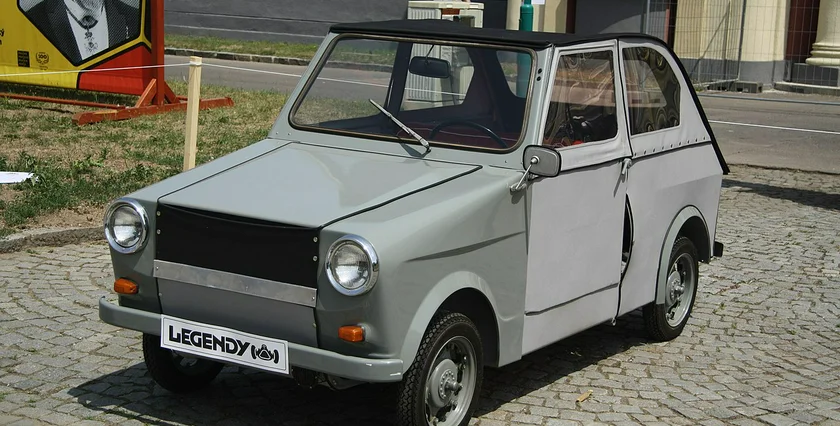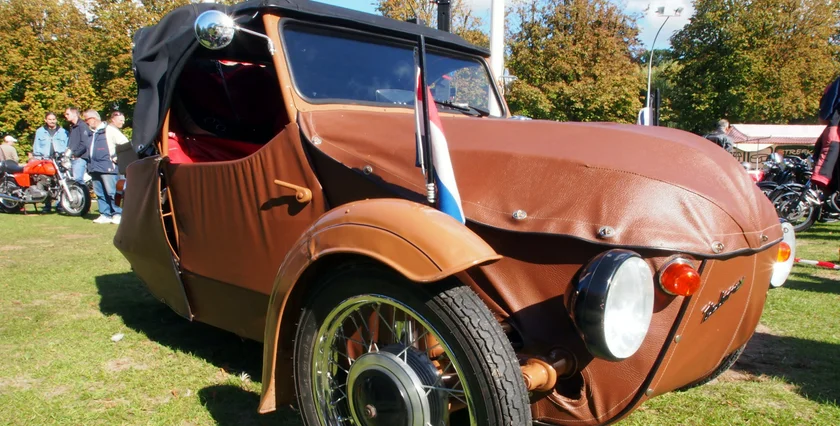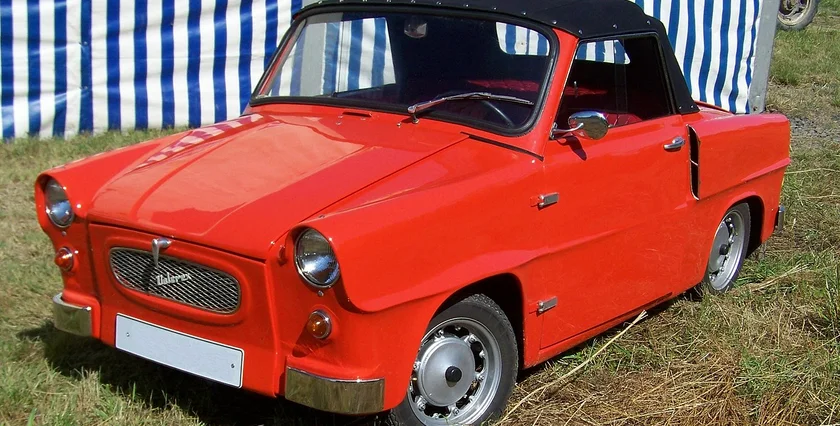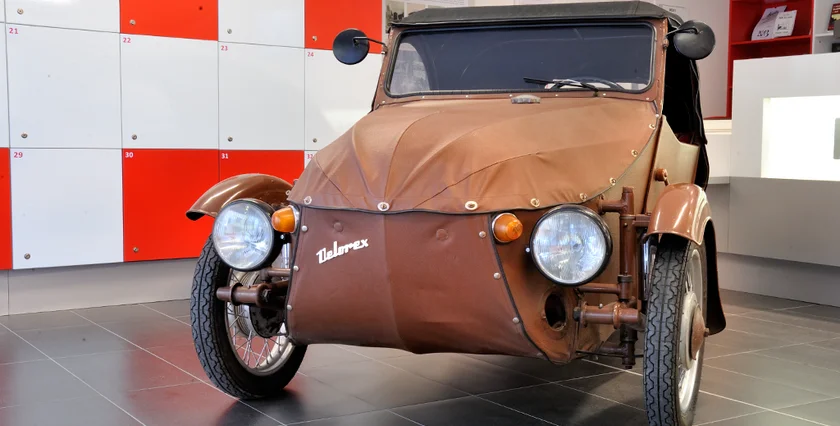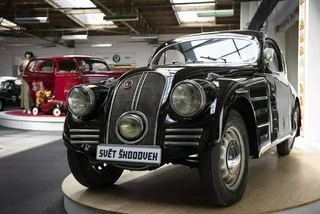Car enthusiasts will soon be able to experience a bit of Czechoslovak transportation history. The Municipal Museum in Česká Třebová will offer city tours in a Velorex, a three-wheeled fabric-covered car that was sometimes called a “running tent,” from September.
The museum recently acquired a late-model Velorex from a private owner. Fans can take a spin in the vehicle by appointment only. The tour will take passengers to see the highlights of Česká Třebová such as a rotunda and the historical center.
For those who want to brush up on their Velorex history before taking a ride, here's a brief history of the only fabric-covered three-wheel car ever produced.

In Czechia, the Velorex is best remembered for its appearance in the film “Run, Waiter, Run” (Vrchní, prchni!), in which the film's protagonist drives the backfiring vehicle around Prague’s Žižkov district much to the chagrin of his neighbors. A new bus stop U Prdlavky (At the Farter) is named in honor of the crude noises the car makes.
Not many of the vehicles were made. In total there were 15,300 units of three different three-wheel models produced between 1951 and ’71. The original concept for the car was a sort of motorized wheelchair, and new ones were sold only to the disabled. Roughly half of the vehicles made were exported to other Eastern-bloc countries.
The cars were popular with people looking for budget transportation, and many wound up in the hands of the general public through the second-hand market. Today meetups and events for owners and fans of the unique vehicle regularly take place.

Brothers František and Mojmír Stránský, who owned a bicycle repair shop in what is now part of Česká Třebová in the Pardubice region, made the first prototype in 1943 out of tubing, sheet metal, and bicycle parts. They named it Oskar, from the Czech words for axle car (kára na ose).
In 1945 they made about a dozen cars using a modified design with motorcycle engines and a leather-like cloth cover instead of sheet metal. Production moved to Velo, a manufacturing cooperative in Hradec Králové, in 1950. A year later production moved to a new factory in nearby Solnice. Though the brothers invented the car, it had to be produced through a state-run company.
František Stránský died in early 1954 after his Oskar skidded on the ice and crashed. A year later Mojmír Stránský was forced out of the company due to his refusal to join the Communist Party. He continued to work in engineering and lived until 2011.
Production continued in the state-run company without the involvement of the brothers. Several modifications were made over the years, usually to increase the engine size.
The car was renamed Velorex-Oskar in 1956, which was later shortened to just Velorex – which in Latin means “king of wheels.” Some of the manufacturing was moved to Rychnov nad Kněžnou in 1961.
A four-wheeled prototype was created in 1960, but never went into general production as doing so would have been beyond the capabilities of the small factory.
Production of three-wheeled Velorex cars lasted until 1971, and a four-wheel model was made for two more years. It was unpopular, and only 1,380 were ever made. People looking for a cheap four-wheel car preferred the East German-made Trabant.
The three-wheeled version cost about one-fourth the price of a standard car. It earned many nicknames, usually of a pejorative nature: ragplane, cockroach, bat, running tent, and runaway pipes, plus several others that are even less flattering.
The museum's Velorex exhibit, which opened in 2012, highlights the history of the car and the local brothers who invented it.
In total, the museum owns seven Velorexes with others on loan. Only the newly acquired car, a 16/350 with a 350 cc engine from a Jawa motorcycle, will be used for the tours. The museum also boasts a real-scaled model of the car for kids.
For the time being, rides will only be available on weekends and during the warmer months. Reservations can be made over the phone though museum director Jana Voleská told Seznam Zprávy that a reservation system is in the works.
Visit the museum website for more details about the exhibit and upcoming news on the tours.












 Reading time: 3 minutes
Reading time: 3 minutes 